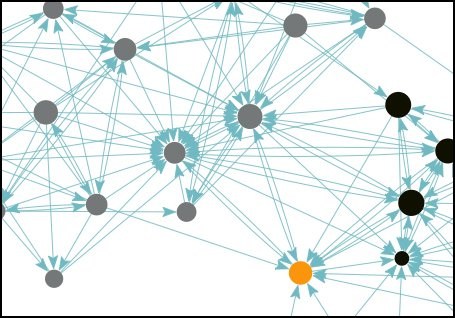13 Feb 2012
Last week, I found myself in Nuffield College, watching a bright-eyed lecturer, Ilmo van der Lowe, in fascination. Believe me when I say that I knew less about the topic, ‘co-rumination,’ than you did. But knowing Ilmo’s background in social psychology (a field in which I had received my bachelor’s degree), I had trekked over to glean what I could.
Luckily for me, the lecture topic seemed almost extraneous. Ilmo laid the foundation for how the field of social psychology was waiting for its next theoretical breakthrough, and then broke out his real reason for speaking: to show that network theory could be co-opted by social psychology to make experiments easier and data more mathematical. The overlap between network theory and social psychology became clear within a few minutes as terms were cross-referenced – “interpersonal relations” became “dyads,” “society” became “network,” and “individual” became “actor.” Easy, peasy, lemon squeezy.
Ilmo used his newfound love for social network analysis to study the idea of co-rumination, a term I learnt was defined by persisting in negative thoughts and feelings with other people. Using a network analysis design, he found that while social sharing could be shown to build relationship quality and reduce stress, both rumination (conducting the process of co-rumination on your own) and co-rumination were shown to drive friends away.
Of course, this experimental psychologist was standing in a room filled with network theorists, and he was the first to admit that he didn’t fully understand all of the capabilities of network analysis. I will also admit my novice status at network theory. But even I knew that the full potential of this experimentation had not been achieved. Ilmo could have made it clearer what constituted a co-ruminational dyad (do both actors in the dyad have to share negative feelings with each other?). He could have also presented a more visual interpretation of what the network would look like if his conclusions were accurate (do co-rumination dyads become little islands in the overall network structure?). I’m sure he could recognize these deficiencies – I found out in a discussion with him afterward that he was an art director in the advertising world before coming to Oxford, and so visualizing the phenomenon must have been high on his agenda.
Once I stepped back though and realized that his lecture wasn’t just about co-rumination, I felt better. Ilmo was scratching the surface, but at least it felt like the right surface. All Ilmo really had to do in this talk was inspire people that social psychology could take a turn in the right direction with a new inclusion of network theory. He certainly inspired me. I just hope he gives the same talk to social psychologists around the world who are tearing their hair out, waiting for a windfall.
The mingling of network theory and social psychology would beg the question of whether more quantifiable terms are necessary for a field to be deemed legitimate on a broad scale. Don’t get me wrong. Making data adhere to mathematical models isn’t the be-all and end-all of existence. But for a field that had been struggling in recent years to come up with something new, this may have been a welcome breakthrough. For a field that relies on experimentation, this signified a new beginning, a way to reconcile Lewin and Ekman and Goffman and Kahneman with a digital world.
My own social network analysis class at the Oxford Internet Institute has confirmed to me that network theory can be used in so many creative ways. Indeed, Fowler & Christakis (2008) used it to analyze the spread of happiness, Aral, Muchnik & Sundararajan (2009) used it to quantify peer influence in purchasing behavior, and Uzzi & Spiro (2005) used it to pinpoint where commercially successful creativity comes from.
In Ilmo’s case, I wondered afterward if such a simple new application of network theory was enough to present a lecture at Nuffield College in front of students, professors, and network theorists. And then with the implications for social psychology spinning my head right round, the answer came back as a resounding yes.
